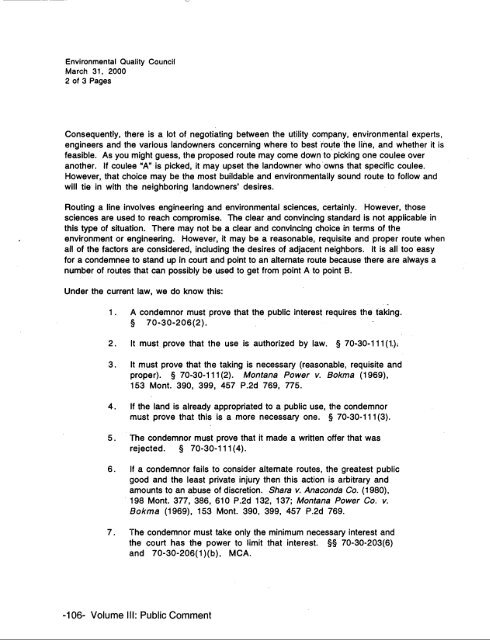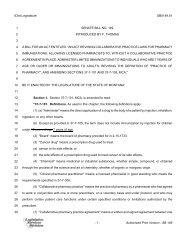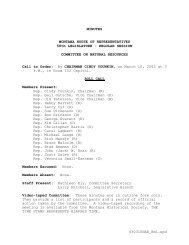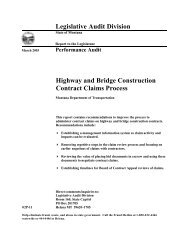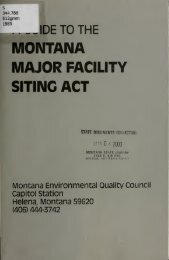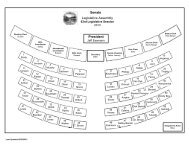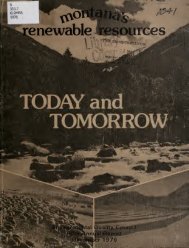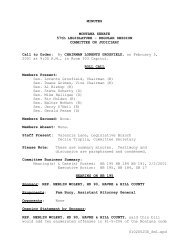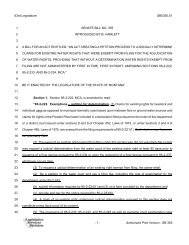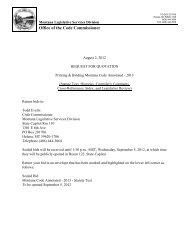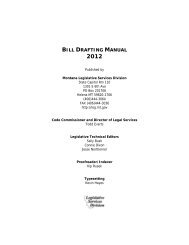Public Comment. Volume III - Montana Legislature
Public Comment. Volume III - Montana Legislature
Public Comment. Volume III - Montana Legislature
Create successful ePaper yourself
Turn your PDF publications into a flip-book with our unique Google optimized e-Paper software.
Environmental Quality Council<br />
March 31, 2000<br />
2 of 3 Pages<br />
Consequently, there is a lot of negotiating between the utility company, environmental experts,<br />
engineers and the various landowners concerning where to best route the line, and whether it is<br />
feasible. As you might guess, the proposed route may come down to picking one coulee over<br />
another. If coulee 'A" is picked, it may upset the landowner who owns that specific coulee.<br />
However, that choice may be the most buildable and environmentally sound route to follow and<br />
will tie in with the neighboring landowners' desires.<br />
Routing a line involves engineering and environmental sciences, certainly. However, those<br />
sciences are used to reach compromise. The clear and convincing standard is not applicable in<br />
this type of situation. There may not be a clear and convincing choice in terms of the<br />
environment or engineering. However, it may be a reasonable, requisite and proper route when<br />
all of the factors are considered, including the desires of adjacent neighbors. It is all too easy<br />
for a condemnee to stand up in court and point to an alternate route because there are always a<br />
number of routes that can possibly be used to get from point A to point B.<br />
Under the current law, we do know this:<br />
1. A condemnor must prove that the public interest requires the taking.<br />
5 70-30-206(2).<br />
2. It must prove that the use is authorized by law. 5 70-30-1 1 l(1.);<br />
3. It must prove that the taking is necessary (reasonable, requisite and<br />
proper). 5 70-30-1 11 (2). <strong>Montana</strong> Power v. Bokma (1 969),<br />
153 Mont. 390, 399, 457 P.2d 769, 775.<br />
4. If the land is already appropriated to a public use, the condemnor<br />
must prove that this is a more necessary one. 5 70-30-1 1 l(3).<br />
5. The condemnor must prove that it made a written offer that was<br />
rejected. 5 70-30-1 11 (4).<br />
6. If a condemnor fails to consider alternate routes, the greatest public<br />
good and the least private injury then this action is arbitrary and<br />
amounts to an abuse of discretion. Shara v. Anaconda Co. (1 980),<br />
198 Mont. 377, 386, 610 P.2d 132, 137; <strong>Montana</strong> Power Co. v.<br />
Bokma (1969), 153 Mont. 390, 399, 457 P.2d 769.<br />
7. 'The condemnor must take only the minimum necessary interest and<br />
the court has the power to limit that interest. 55 70-30-203(6)<br />
and 70-30-206(1)(b), MCA.<br />
-1 06- <strong>Volume</strong> Ill: <strong>Public</strong> <strong>Comment</strong>


